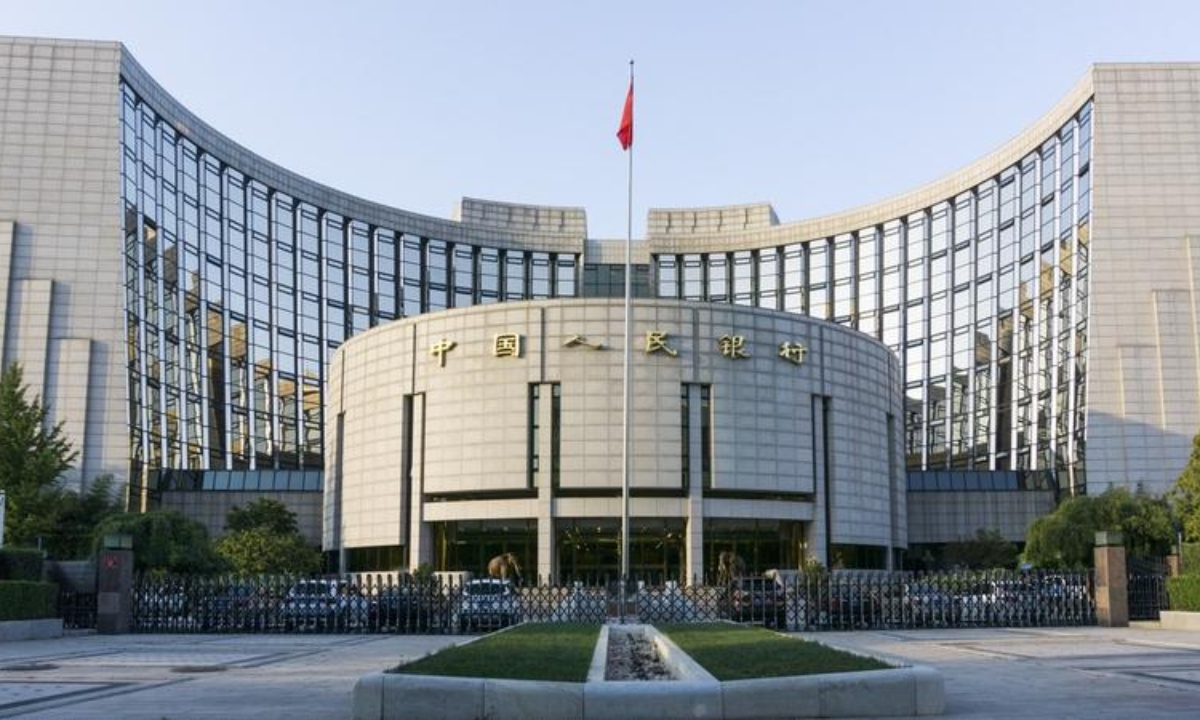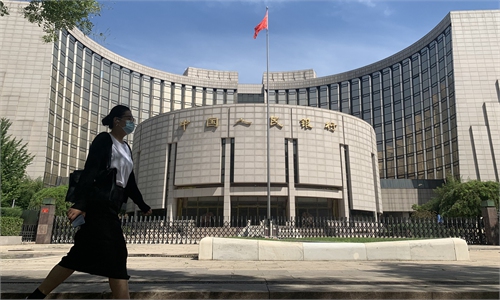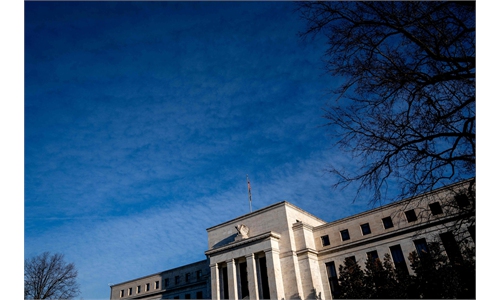
The headquarters of the People's Bank of China in Beijing Photo: IC
With global financial markets again facing huge uncertainty about the US Federal Reserve's interest rate policy, China is moving at its own pace to provide certainty for market expectations. Such certainty highlights the flexibility of China's monetary policy under external pressure and economic challenges, and also reflects its ability to stabilize economic confidence.Unexpectedly high US consumer and producer prices in January again changed market expectations about the Fed's rate cuts.
Swaps trading shows that traders have not only removed March as a possibility but May also looks improbable, and even conviction about the June cut is wavering, Bloomberg reported on Tuesday. Meanwhile, the latest Reuters poll of economists showed that a slim majority now expect a June cut as the most likely, with some putting the first reduction sometime in the second half of 2024.
The shock of stickier US inflation to market expectations does not stop there, with some even calling for interest rate hikes. Former US treasury secretary Lawrence Summers recently said that persistent inflationary pressures evident in the latest data suggest that there's potential for the next Fed policy move to be to raise interest rates, not lower them.
Some may argue it is premature to debate the possibility of a rate hike, as the January figures were heavily influenced by seasonal factors. But the new round of speculation about the timing of a rate cut and the possibility of a rate hike are already enough to increase market volatility.
Whatever monetary policy decision the Fed makes, global financial markets and other economies will feel the spillover effect, as inflows or outflows of liquidity will present new challenges for monetary and exchange rate policies.
From the perspective of China, the spillover effects and uncertainty about the Fed's monetary policy have always posed challenges to China's policy. For instance, the continued surge in US bond yields has put a lot of pressure on the yuan's exchange rate and cross-border capital flows. Even if the Fed cuts rates, the weakening US Dollar Index doesn't mean less pressure on the yuan, which needs to be at a certain level to minimize the impact on exports.
But despite external uncertainties, expectations about China's monetary policy have stabilized following policy adjustments.
China's central bank on Tuesday cut its benchmark mortgage reference rate by 25 basis points (bps), the largest one-time rate reduction in years. The extent of the cut exceeded market expectations, sending another clear signal about monetary easing.
It was also not first time this year that the central bank surprised the market with monetary easing. At a press conference in late January, Pan Gongsheng, governor of China's central bank, announced that China would cut the reserve requirement ratio (RRR) by 50 bps from February 5, which would inject 1 trillion yuan of long-term liquidity into the market.
He also announced plans to lower the interest rates of relending and rediscounting facilities that support agriculture and small firms by 25 bps to 1.75 percent.
The announcement of the combination and the timing of the RRR and rate cuts was unusual, reflecting China's determination to support the economy with more liquidity. All of these are of great significance in stabilizing market expectations and reducing policy uncertainty. Compared with many emerging economies, China has more flexibility in adjusting monetary policy based on its own needs and pace amid external challenges. For instance, low levels for the CPI and PPI mean that there is more scope for monetary expansion in 2024.
With China's monetary adjustments becoming more sophisticated, there is every reason to believe that China is capable of managing various risks and providing more certainty to financial markets both at home and abroad.


